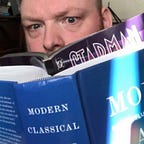Einstein’s General Relativity passes the test at the centre of our Galaxy
Measurements of a star passing close to the supermassive black hole at the centre of the Milky Way confirms the predictions of Einstein’s theory of General Relativity in a high gravity environment.
A detailed study of a star orbiting the supermassive black hole at the centre of our Galaxy, reveals that Einstein’s theory of general relativity is accurate in its description of the behaviour of light struggling to escape the gravity around this massive space-time event.
The analysis — conducted by Tuan Do, Andrea Ghez and colleagues — involved detecting the gravitational redshift in the light emitted by a star closely orbiting the supermassive black hole known as Sagittarius A*. The redshift was measured as the star reached the closest point in its orbit — which has a duration of 16 years — to the black hole.
